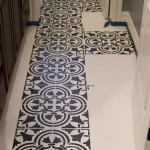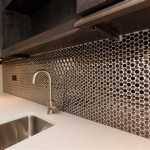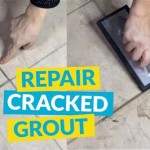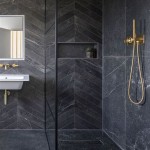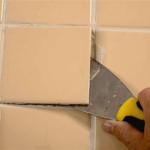Can You Tile Over Painted Cinder Blocks in Singapore?
Tiling over painted cinder blocks is a common query for homeowners in Singapore looking to renovate or upgrade their spaces. While possible, it requires careful preparation and consideration to ensure the longevity and stability of the tiled surface. This article will explore the factors influencing successful tile installation over painted cinder blocks in Singapore's specific climate and building practices.
Assessing the Paint and Cinder Blocks
The existing paint layer is the primary concern when tiling over cinder blocks. Several aspects need evaluation:
- Paint Type: Oil-based paints create a non-porous surface that hinders tile adhesive bonding. Acrylic or latex paints offer better adhesion prospects.
- Paint Condition: Peeling, flaking, or chalking paint must be removed. A stable, well-adhered paint layer is essential.
- Cinder Block Condition: Check for cracks, damage, or efflorescence (salt deposits). Address these issues before tiling.
Preparing the Painted Surface
Proper surface preparation is crucial for successful tile adhesion. The goal is to create a surface that allows the tile adhesive to mechanically bond:
- Cleaning: Thoroughly clean the painted surface with a strong detergent and water to remove dirt, grease, and mildew. Allow ample drying time.
- Deglossing: If the paint is glossy, use a deglosser or light sanding with coarse sandpaper (80-100 grit) to create a slightly roughened surface. Fine sanding (150-220 grit) can further improve adhesion on smoother paints.
- Priming: Apply a high-quality bonding primer specifically designed for masonry and challenging surfaces. This primer will create a better bond between the paint and the tile adhesive.
Choosing the Right Tile Adhesive
Selecting the appropriate tile adhesive is paramount for a durable tile installation on painted cinder blocks:
- Modified Thin-Set Mortar: This type of mortar contains polymers that enhance its bonding strength and flexibility, crucial for accommodating minor movements and preventing tile debonding.
- High-Performance Adhesive: For demanding applications or areas exposed to moisture, consider a high-performance adhesive formulated for exterior use or wet areas. Consult with a tile supplier to select the best option based on the specific project needs and environmental conditions in Singapore.
Considering Singapore's Climate
Singapore's hot and humid climate presents unique challenges for tile installations. The following factors need consideration:
- Moisture: High humidity levels can affect adhesive curing and potentially lead to mold growth behind the tiles. Ensure proper ventilation and consider using a waterproof membrane behind the tiles in wet areas.
- Temperature Fluctuations: Temperature variations can cause expansion and contraction of both the cinder blocks and the tiles. Using a flexible adhesive and incorporating expansion joints can accommodate these movements and prevent cracking.
Tile Selection and Installation
Choosing the right tile and employing proper installation techniques contributes to the project's success:
- Porcelain Tiles: Porcelain tiles are denser and less porous than ceramic tiles, making them more suitable for areas exposed to moisture and temperature fluctuations.
- Small Format Tiles: Smaller tiles are generally less susceptible to cracking due to substrate movement compared to larger format tiles.
- Backer Board: For optimal results, especially in wet areas or when tiling over oil-based paint, consider installing a cement backer board over the prepared painted surface. This provides a stable and consistent substrate for tile adhesion.
- Expansion Joints: Incorporate expansion joints every few meters to accommodate thermal movement and prevent cracking. These joints should be filled with a flexible sealant.
Long-Term Maintenance
Maintaining the tiled surface will prolong its lifespan:
- Regular Cleaning: Clean the tiles regularly with a suitable tile cleaner to remove dirt and grime. Avoid harsh chemicals that can damage the grout or tiles.
- Grout Sealing: Seal the grout lines periodically to prevent staining and water penetration, especially in wet areas.
- Inspection and Repair: Regularly inspect the tiled surface for any signs of cracking, loose tiles, or damaged grout. Address these issues promptly to prevent further damage.
Tiling over painted cinder blocks in Singapore demands meticulous preparation, material selection, and installation practices. By following the outlined guidelines and considering the specific environmental factors, homeowners can achieve a durable and aesthetically pleasing tile installation.

Resident Says Painting Over Floor Tiles In Hdb Block Unnecessary It Turns Ugly When Paint Ls Off

How To Stencil Diy Cement Cinder Block Planters

Tiling Systems Ardex Singapore

Can You Waterproof Over Paint Waterproofing Singapore

9 Hdb Renovation Permits And Guidelines You Need When Renovating Your Home

Summer Flower Cement Tile Marrakech Design

Paint A Pattern With Kitchen Floor Stencils Diy Decor S

Home Renovations Know The Dos And Don Ts When Renovating Your Hdb Flat Straits Times

Waterproofing System In Swimming Pool

Summer Flower Cement Tile Marrakech Design
Related Posts

